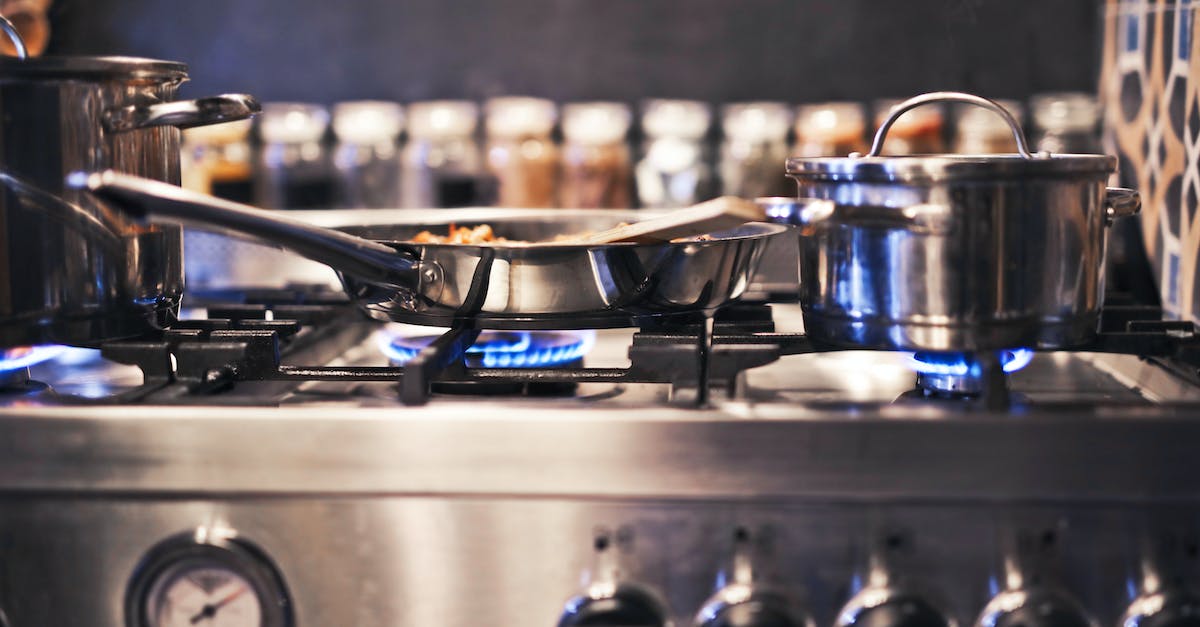This post contains affiliate links. See the affiliate disclaimer here.
Choosing the right cookware can feel overwhelming, especially when deciding between a carbon steel pan and stainless steel. Both options are kitchen favorites, but they serve different purposes and offer unique benefits. Understanding their differences can help you make the best choice for your cooking needs.
You’ve likely heard about the durability of stainless steel and the versatility of carbon steel, but which one suits your style? Whether you’re searing steaks, sautéing veggies, or whipping up delicate sauces, the material of your pan plays a crucial role in your results. By comparing these two popular options, you’ll discover which one deserves a spot in your kitchen.
Key Takeaways
- Material Differences: Carbon steel is composed of 99% iron and 1% carbon, while stainless steel contains iron, at least 10.5% chromium, and other metals like nickel, making it highly rust-resistant.
- Cooking Performance: Carbon steel heats up faster and is great for high-heat techniques like searing and stir-frying, while stainless steel offers even heat distribution, perfect for delicate sauces and deglazing.
- Maintenance: Carbon steel requires regular seasoning and care to prevent rust, unlike stainless steel, which is rust-resistant and easier to clean, often dishwasher-safe.
- Durability: Stainless steel is more resistant to corrosion, especially with acidic ingredients, while carbon steel is prone to rust without proper upkeep.
- Cost and Value: Carbon steel is more budget-friendly for professional-grade performance, whereas stainless steel costs more but offers long-term durability and versatility.
- Choosing the Right Pan: Your choice depends on your cooking style, maintenance preferences, and budget—carbon steel is ideal for high-heat, fast cooking, while stainless steel suits versatile, low-maintenance cooking.
Carbon Steel Pan Vs Stainless Steel: An Overview
Carbon steel and stainless steel pans offer unique features tailored to varied cooking styles. Understanding their properties helps you determine which suits your needs.
Composition
Carbon steel contains approximately 99% iron and 1% carbon. Stainless steel typically blends iron with at least 10.5% chromium, along with varying amounts of nickel or manganese.
Weight
Carbon steel pans are lighter due to lower density, making them easier to handle. Stainless steel pans are typically heavier, providing more stability for tasks like mixing or whisking.
Heat Conductivity
Carbon steel conducts heat faster, ensuring quicker temperature adjustments for precision cooking. Stainless steel heats more evenly under consistent heat but reacts slower to changes.
Maintenance
Carbon steel develops a natural nonstick patina with proper seasoning. Stainless steel doesn’t require seasoning but can stick with improper techniques, like overcrowding the pan.
Durability
Stainless steel resists corrosion and rust due to chromium content. Carbon steel is prone to rusting if exposed to moisture without thorough drying or oiling.
Cooking Applications
Use carbon steel for high-heat cooking, such as stir-frying and searing. Stainless steel excels in deglazing, sauce-making, and acidic recipes.
Cost
Carbon steel is more affordable for professional-grade cookware. Stainless steel pans generally cost more due to added materials and corrosion resistance.
Choose based on your cooking priorities and care preferences.
Differences In Material Composition
Material composition directly impacts the performance and usability of cookware. Carbon steel and stainless steel pans differ significantly in their elemental makeup, which influences their properties and applications in the kitchen.
What Is Carbon Steel?
Carbon steel is composed of approximately 99% iron and 1% carbon. This balance provides both strength and malleability, making it ideal for high-heat cooking techniques. The high iron content enables excellent heat conductivity, ensuring fast and even heating. Its minimal carbon percentage enhances durability while allowing for seasoning, creating a natural non-stick surface with consistent use.
What Is Stainless Steel?
Stainless steel contains iron, at least 10.5% chromium, and varying amounts of nickel, manganese, or molybdenum. Chromium adds resistance to rust and corrosion, making stainless steel highly durable and low-maintenance. For pans, this composition ensures stability at high temperatures without warping. Unlike carbon steel, stainless steel lacks the seasoning capability but maintains a polished surface that resists staining and is dishwasher-safe depending on the specific alloy blend.
Cooking Performance Comparison
Understanding how carbon steel and stainless steel pans perform during cooking helps evaluate their strengths for your cooking needs.
Heat Conductivity And Retention
Carbon steel heats up faster due to its higher thermal conductivity, making it ideal for searing and stir-frying. It retains heat effectively, ensuring steady temperatures during cooking. However, it cools relatively quickly when removed from heat.
Stainless steel heats more evenly, reducing the risk of hot spots. Its slower heat conductivity means preheating takes longer, but it retains heat well for simmering or sauce reductions. Use it for precise temperature control in tasks like deglazing or making delicate sauces.
Versatility And Usability
Carbon steel excels in high-heat cooking, such as sautéing and frying, and supports a natural non-stick coating after seasoning. It’s compatible with various heat sources, including induction and ovens, but regular seasoning is essential for maintaining its surface.
Stainless steel is versatile, working seamlessly with tasks like browning meat and acidic recipes, where carbon steel may react. It’s dishwasher-safe and resists rust, requiring less maintenance. Its polished surface makes it suited for professional and home kitchens alike.
Maintenance And Durability
The maintenance and durability of carbon steel and stainless steel pans differ significantly. Understanding these differences helps you select the right cookware for your specific needs.
Cleaning Requirements
Carbon steel pans require immediate cleaning and drying to prevent rust. Wash them with warm water and minimal soap, avoiding abrasive sponges, to protect the seasoning. After cleaning, apply a thin layer of oil to maintain the non-stick surface.
Stainless steel pans are easier to clean. You can scrub them with soap and water, use steel wool for stuck-on food, or place them in a dishwasher if they’re dishwasher-safe. Avoid harsh cleaners that might dull the polished surface.
Resistance To Rust And Corrosion
Carbon steel pans are prone to rust because of their high iron content. Regular seasoning and proper storage in a dry environment reduce this risk and enhance their protective layer.
Stainless steel pans resist rust and corrosion due to the chromium content, making them more durable. They handle acidic ingredients and humid conditions better, maintaining their integrity without requiring additional coatings or seasoning.
Affordability And Value
Carbon steel pans typically cost less than stainless steel pans, offering a budget-friendly option for professional-grade cookware. Basic carbon steel pans range from $20 to $50, providing excellent heat conductivity and a natural non-stick surface after seasoning.
Stainless steel pans, especially those with multi-ply construction, are more expensive due to their durability and versatility. Prices often start at $40 for single-layer models and exceed $100 for high-quality, multi-layered designs. These pans resist rust, handle acidic ingredients, and maintain their polished look over time.
Carbon steel delivers exceptional value for high-heat cooking and a lightweight design, making it a practical choice if you’re focused on affordability without sacrificing cooking performance. Stainless steel offers long-term value through durability and low maintenance, suitable for complex cooking tasks and acidity-heavy recipes. Choosing between them depends on your budget and cooking needs.
Choosing The Right Pan For Your Needs
Selecting the ideal pan depends on your cooking style, preferences, and maintenance commitment. Consider the following factors to determine whether carbon steel or stainless steel suits your needs:
- Cooking Techniques: Carbon steel is better for high-heat applications like searing, stir-frying, and grilling due to its rapid heat conduction. Stainless steel is more versatile for tasks requiring even heat distribution, such as simmering, sauce-making, and browning.
- Ease of Use: Carbon steel pans are lighter than stainless steel, offering easier handling during fast cooking methods. Stainless steel, being heavier, provides steadiness and is simpler for beginner cooks to maintain.
- Maintenance: Carbon steel requires seasoning and careful upkeep to prevent rust and maintain its natural non-stick surface. Stainless steel needs minimal maintenance since it resists rust and is often dishwasher-safe.
- Durability: If durability in acidic environments or moisture exposure is your priority, stainless steel’s resistance to corrosion offers a better choice. Carbon steel, though less resistant, remains durable with proper care.
- Cooking Frequency: For frequent, fast-paced cooking, carbon steel’s quick responsiveness to heat changes is advantageous. Use stainless steel if you prefer longer cooking processes or precision control.
- Budget: Carbon steel is usually more affordable, making it accessible for professional-grade performance at a lower cost. Stainless steel costs more upfront but compensates with low maintenance and lasting quality.
Evaluating these aspects lets you align your pan choice with your specific needs and preferences.
Conclusion
Choosing between carbon steel and stainless steel pans ultimately comes down to your cooking style and priorities. Each material offers unique advantages that cater to different needs in the kitchen. By considering factors like heat performance, maintenance, and budget, you can select the cookware that best complements your culinary goals. Whether you prioritize high-heat searing or low-maintenance versatility, the right pan will elevate your cooking experience.

